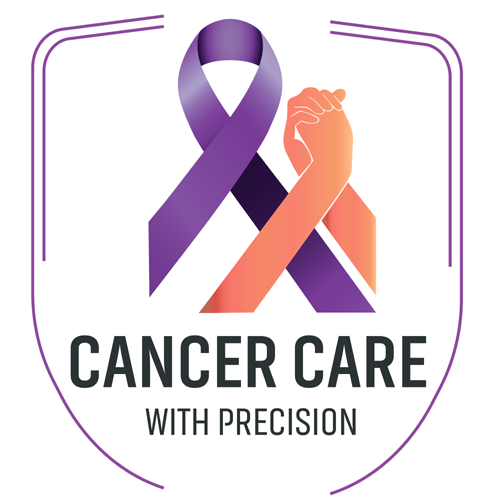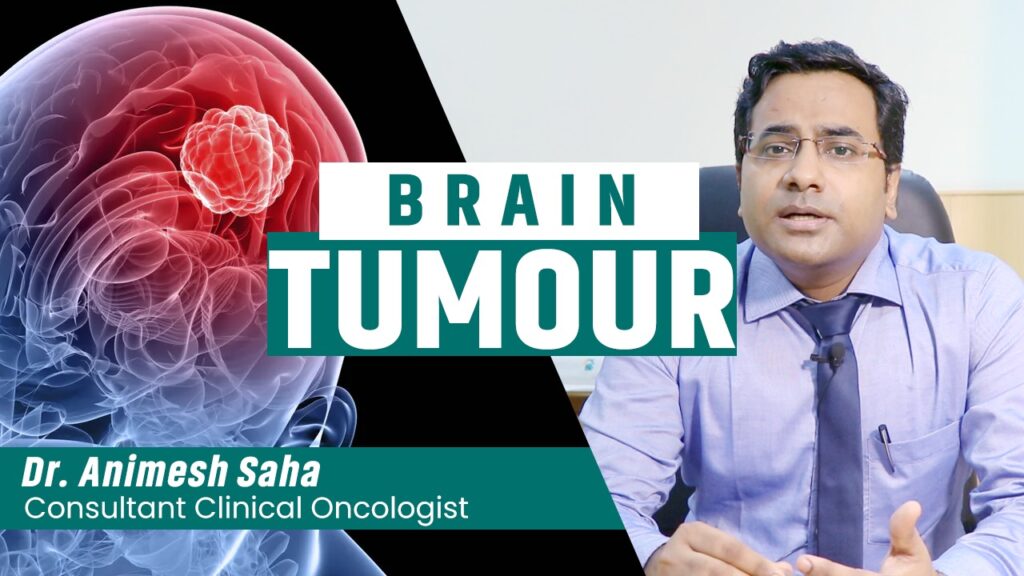Best Radiation Oncologist in Kolkata
According to definition of National Cancer Institute (NCI) Glioma is a tumour of the brain that begins in glial cells (cells that surround and support nerve cells). Apart from brain it can also originate in spinal cord.
What is the global burden of Glioma?
According to GLOBOCON 2018 data, Brain tumour is the 10th most common tumour which comprises 2.4% of all cancer worldwide. In 2018, there was 28142 new cases diagnosed in India with 24000 death from brain tumour. About 33 percent of all brain tumors are gliomas.
What causes Glioma?
There is no definitive cause for developing glioma but there are some suggested risk factors which can predispose an individual for developing glioma.
- Gliomas can affect all ages, but they are most often seen in adults.
- Gliomas are slightly more common in men than women.
- More common in Caucasians than African Americans.
- Inherited cancer syndrome- A number of inherited cancer syndrome with different chromosomal abnormality can give rise to increased risk of brain tumour for example Neurofibromatosis type 1 can be associated with Astrocytoma or optic nerve glioma, Neurofibromatosis type 2 can be associated with Astrocytoma, Tuberous sclerosis can be associated with Sub ependymal giant cell astrocytoma, Li-Fraumeni syndrome can be associated with Astrocytoma, Turcot’ syndrome can be associated with Glioblastoma.
- Exposure to ionising radiation- Exposure to therapeutic doses or high-dose radiation is the most firmly established environmental risk factor for glioma. First evidence of this has come from the Hiroshima and Nagasaki atomic bomb survivors who showed higher incidence of glioma. Previously, fungal infection of scalp used to get treated by low dose radiation which had led to higher incidence of glioma in those patients. Child Cancer Survivor Study (CCSS) has shown that there is increased risk of brain tumor in children treated with therapeutic radiation particularly patients with Acute lymphoblastic leukaemia.
- Allergies and Atopic disease- INTERPHONE study has shown that history of allergic disease reduces the risk of developing brain tumour. A meta-analysis published in European journal of neurology in 2011 also confirmed the protective effect of allergic disease in brain tumour.
- Cellular phones- There are conflicting report of association of brain tumour with use of cellular phone. In 2011, the International Commission for Non-Ionizing Radiation Protection Standing Committee reviewed the evidences and could not found any firm correlation between cellular phone use and brain tumour. Using the UK million-woman study cohort, Dr Benson analyzed 791,710 women between 50 and 64, and found no significant risk brain tumour with greater than 10 years of cellular phone use.
What are the different types of Glioma?
According to World health organization (WHO) 2007 classification, Glioma can be divided four different grade. Grade I and II comprises ‘ low grade’ glioma and grade III and IV comprises ‘high grade’ glioma. Grade IV glioma or Glioblastoma multiformae is the most common type of glioma comprising almost 45% of all glioma. In 2016, WHO has introduced different molecular markers in brain tumour classification. These molecular markers not only help in classifying and grading brain tumour but also help in making treatment decisions and deciding on prognosis of brain tumour patients. Some of the important molecular markers include- IDH 1&2 mutation, ATRX loss, TP53 mutation, IP/19Q codeletion, MGMT methylation etc.
What are the symptoms of Glioma?
- Headache
- Convulsion
- Changes in mental state
- Loss of consciousness
- Progressive weakness of arm and/ or leg
- Visual problems- Loss of vision or double vision
What are the investigations done in a patient with Glioma?
In a suspected patients of brain tumour complete Neurological examination should be done by a doctor. CT scan of brain is usually the first investigation a doctor would normally suggest. MRI Brain is one of the most important investigation done to diagnose brain tumour. Stereotactic biopsy or radiologically guided needle biopsy or radiologically guided open biopsy and/or resection or elctrophysiologically guided resection from brain tumour is done to confirm the diagnosis. Magnetic resonance spectroscopy is needed in selected cases with diagnose the type of brain tumour. Some molecular tests are done on s biopsy sample to confirm the type of brain tumour, decide on treatment as well as to know the prognosis of the patients for example IDH 1 & 2, TP53, ATRX, 1P/19Q codeletion, MGMT methylation. MRI spine is usually done if there is symptoms (Back pain, progressive limb weakness) suggestive of glioma involving spine. In skull base tumours certain other investigation should be done which include 1. Audiological testing, 2. Auditory-evoked brainstem responses testing, 3. Vestibular testing, 4. Prosthetic assessment to establish the need for ocular, aural or skull bone replacement, 5 Speech and language therapy assessment, 6. Dietetic assessment.
What is the treatment of Glioma?
In most cases of glioma surgical resection of the tumour is the main treatment. Sometimes glioma is localted in some critical area of brain, In that case either biopsy and/ or surgery is not possible or too risky. For example, 1. Brainstem glioma- Any attempt of biopsy or surgery can lead to death of the patient, 2. Optic nerve glioma- any attempt of biopsy or surgery can lead blindness of the patients. These patients are dignosed based on their scan findings and are treated with radiotherapy or combination of radiotherapy and chemotherapy.
Treatment of low grade glioma- Some patient of small and asymptomatic low grade glioma can be simply observed without immediate treatment. These patients can be treated at progression with surgery and/ or radiotherapy. In most patients of low grade glioma, surgery should be considered if the tumour in operable. If the tumour is not operable, these patients can be treated with radiotherapy. Grade I glioma (Pilocystic astrocytoma, Dysembryoplastic neuroepithelial tumors) is much more common in children and potentially cured with surgery. These patients usually don’t need any further treatment after surgery. After surgery for grade II glioma (Astrocytoma, Oligodendroglioma) patients might need adjuvant radiotherapy based on certain factors e.g. type of tumour, extent of surgical resection, age of the patient etc. Radiotherapy is given over a period of 5-6weeks. In RTOG 9802 study has shown better outcomes of patients with grade II glioma with Oligodendroglioma histology, who received 6 cycles of chemotherapy with PCV regimen on the top of radiotherapy.
Treatment of high grade glioma- Surgery is the primary treatment if the tumour is operable. Sometimes shunt insertion is needed even before surgery as a emergency measures to reduce the pressure inside brain. Most patients will need 6- 6.5 week course of radiotherapy after surgery. In elderly or unfit patients shorted version of radiotherapy (Hypofractionated) should be considered. In a fit grade III glioma patients who have 1P/19Q codeleted oligodendroglioma, 6 cycle of chemotherapy with PCV regimen should be considered after radiotherapy. In a fit grade III glioma patients who don’t have 1P/19Q codeletion, 1 year of oral chemotherapy with Temozolamide is used. Grade IV glioma also known as Glioblastoma multiformae is usually treated with combination of concurrent Radiotherapy and oral chemotherapy. Patient will also need 6 months of oral chemotherapy after completion of concurrent chemoradiotherapy. While treating a patient of glioma with radiotherapy, advanced radiotherapy technique like Intensity modulated radiotherapy (IMRT) and Volumetric modulated arc therapy(VMAT) has shown to reduce the dose to critical normal structures of brain and reduce the side effects in long term survivors.
Brain tumour tend to recur even after treatment. On recurrence surgical options should be explored to check whether there is any possibility of resurgery. Otherwise recurrent brain tumour are treated with oral or intravenous chemotherapy. Radiation can be given at recurrence if the patient didn’t have it at the outset. There is limited role of reirradiation in very selected cases of recurrent brain tumour.
What is the prognosis of Glioma?
Prognosis of patients with Glioma depends on many factors which include age, fitness, extent of surgical resection, type of glioma, grade of glioma and certain other molecular factors (IDH, I9/19Q, MGMT etc). Prognosis of patients with low grade glioma is usually good. Some patients with low grade glioma can be cured with surgery with or without radiotherapy. Prognosis of patients with high grade glioma particularly grade IV or Glioblastoma multiformae, is usually poor. These patients are usually incurable and their tumour tend to recur. Although certain molecular subtype of grade IV glioma do better than other for example patients with IDH mutant grade IV glioma live longer than patients with IDH wild type grade IV glioma.


